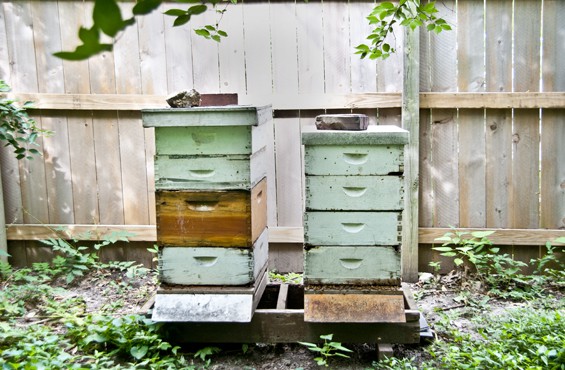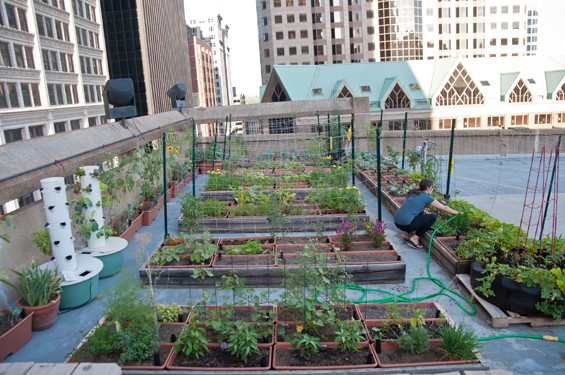As pictures of farmers markets become trendy on Instagram and restaurants advertising locally grown food are pulling in overwhelming business, it is important to understand the myths, misconceptions and realities behind eating local.
There are undeniable benefits to eating local that cause us all to spend a few extra dollars on strawberries at the market or a chicken dinner at our new favorite restaurant.
For instance, locally grown food is known to be more flavorful. Some people believe that locally grown produce tastes better because it’s not produced for the masses. This is a myth, however, as the majority of local foods are, indeed, produced for the masses, just on a smaller scale.
Instead, the local produce may taste more flavorful because the produce doesn’t need to travel great distances to reach customers and has, most likely, been picked in the last couple of days. Local produce can be full of flavors that produce would otherwise lose on long journeys.
Speaking of travel time, locally grown food better retains vitamins and other health benefits versus food that travels great distances. Locally grown produce can have higher levels of vitamins C, E, A and B. Meats and dairy are also subject to this issue; the longer meat and dairy travels, the lower the levels of omega-3 fatty acids they contain.

Photo by Matthew Wenger
Another strong argument for eating local is often the impact on the area’s economy. Buying local food stimulates the economy in many ways: local businesses are 52 percent more likely to circulate money back into the economy versus an average of just 14 percent from national retailers. As local businesses grow and expand with increased demand and revenue, they are able to hire more labor, creating more jobs in the community.
Finally, eating locally grown foods helps grow the area’s economy by reducing the dependency on monoculture (the cultivation of a single crop in a given area). Farmers are forced to diversify their crops in order to meet the demand of their increasing local business. A region cannot survive on only one crop, so farmers will begin to increase the variety they produce. This reduces the risk of failure to the local economy in the event of a poor harvest.
While there may be benefits to eating local, there are also many misconceptions about how advantageous the practice may be. While some people believe in the health benefits of locally grown foods, there are also financial considerations.
Transitioning to a “locavore” lifestyle (eating foods that are locally produced and not moved long distances) can significantly increase a family’s food budget. Mass produced food is produced with economies of scale, meaning that it is more cost effective to produce large quantities. By producing food with economies of scale, large producers are able to decrease the price of food. On the other hand, locally grown is food costlier to produce, and therefore, many people are unable to afford it at all.

Photo by Caroline Yoo
Advocates of local eating often praise its environmental benefits, claiming that the reduction of transportation helps cut down greenhouse gas emissions. While in theory this idea makes sense, the concrete impacts are minimal.
Only a small fraction of environmental costs of food production come from transportation. The emissions from transporting produce from California to Michigan is notably smaller than the emissions produced from artificially heating a greenhouse in Michigan to produce the same goods. A recent study proved that it would be more environmentally friendly for the United Kingdom to import most of its produce from New Zealand than to farm it themselves with artificial growth practices.
A decrease in specialization would also negatively impact the environment. In the modern era of super-enlarged populations, this would create unforeseen environmental costs. Over time, we have developed practices of mass production based on specialization.
For example, we grow potatoes in Idaho because of its climate and rich volcanic soil. This system has been the most effective means of production. Reducing specialization would decrease this effectiveness. Researchers estimate that outcomes from this decrease include the need for 60 million more acres of farmland as well as 2.7 more tons of fertilizer in the United States.

Photo by Caroline Yoo
There has been an increase in the amount of locally produced foods available in recent years due to rising popularity and demand. As consumers are surrounded by hoards of incomplete information, it is important to remain educated about the true nature of local foods.
One way to stay up to date about the availability of locally sourced food in your area is the locavore index that ranks states in the based on their consumption and availability of local food. The 2015 locavore index ranked Vermont, Maine, New Hampshire, Oregon and Massachusetts among the top states for local eating. Where do you place on the locavore spectrum?


